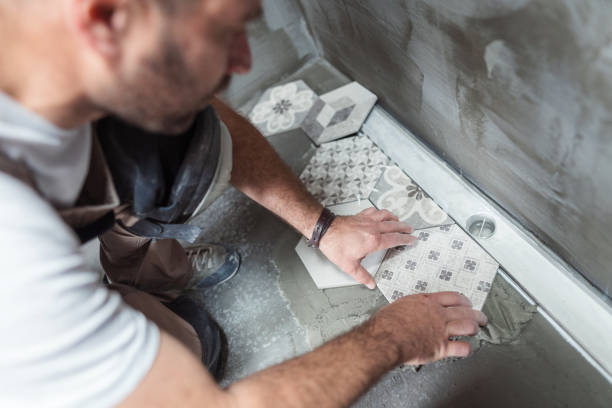Introduction
Creating a water-resistant barrier in your bathroom is crucial to prevent water damage, mold growth, and structural deterioration. Waterproofing your bathroom ensures that it remains a durable and hygienic space. This article offers essential tips for waterproofing your bathroom effectively, highlighting the importance of each step in the process.
The Necessity of Waterproofing Your Bathroom
Protecting Your Investment
Your home is a significant investment, and the bathroom is a critical area that requires protection from water damage. Proper waterproofing in your bathroom prevents leaks and moisture buildup that can lead to extensive and costly repairs.
Promoting Health and Hygiene
A waterproof bathroom is a healthier bathroom. Waterproofing helps prevent mold and mildew, which thrive in damp environments and can cause health issues, including allergies and respiratory problems.
Preserving Aesthetic Appeal
Water damage can ruin the look of your bathroom, causing stains, peeling paint, and warped surfaces. Waterproofing maintains the bathroom's aesthetic appeal, keeping it looking clean and new.
Steps for Effective Waterproofing
Plan and Prepare
Effective waterproofing of your bathroom begins with careful planning and preparation. Identify all areas that need waterproofing, including walls, floors, and fixtures. Clean these areas thoroughly, ensuring they are free from dust, grease, and old sealant.
Select Appropriate Waterproofing Materials
Choosing the right materials is crucial. Consider products like liquid waterproofing membranes, sheet membranes, and waterproof sealants. Each type has specific benefits and is suitable for different areas of the bathroom.
Prime the Surfaces
Applying a primer to the surfaces helps improve the adhesion of the waterproofing materials. It also seals the substrate, providing a better base for the waterproofing layers.
Apply Waterproof Membranes
Apply waterproof membranes to all areas exposed to water, such as shower walls, floors, and around bathtubs. Ensure the membrane is applied evenly and extends adequately up the walls to create a watertight barrier.
Seal Joints and Corners
Joints and corners are vulnerable points for water penetration. Use a high-quality sealant to seal all joints, edges, and corners meticulously. This step is critical to prevent water from seeping through and causing damage.
Conduct a Thorough Leak Test
After applying the waterproofing materials, conduct a leak test. Fill the shower or bathtub with water and observe for any leaks. Address any issues immediately to ensure a completely waterproofed bathroom.
Common Mistakes to Avoid
Ignoring Surface Preparation
Skipping the surface preparation step is a common mistake that can compromise the waterproofing process. Ensure all surfaces are clean, dry, and smooth before applying any waterproofing materials.
Using Incompatible Products
Using products that are not compatible with each other can result in ineffective waterproofing. Always follow the manufacturer's recommendations and ensure that the products you use are designed to work together.
Overlooking Small Details
Neglecting small details, such as sealing joints and corners thoroughly, can lead to water leaks. Pay close attention to every detail to ensure a comprehensive waterproofing job.
Conclusion
Waterproofing bathroom is a crucial step in maintaining its durability, hygiene, and aesthetic appeal. By following these essential tips and avoiding common mistakes, you can ensure that your bathroom remains a safe and water-resistant space. Thorough planning, the right materials, and meticulous application are the keys to successful waterproofing. Protect your investment and enjoy a beautiful, long-lasting bathroom by prioritizing effective waterproofing.





Comments